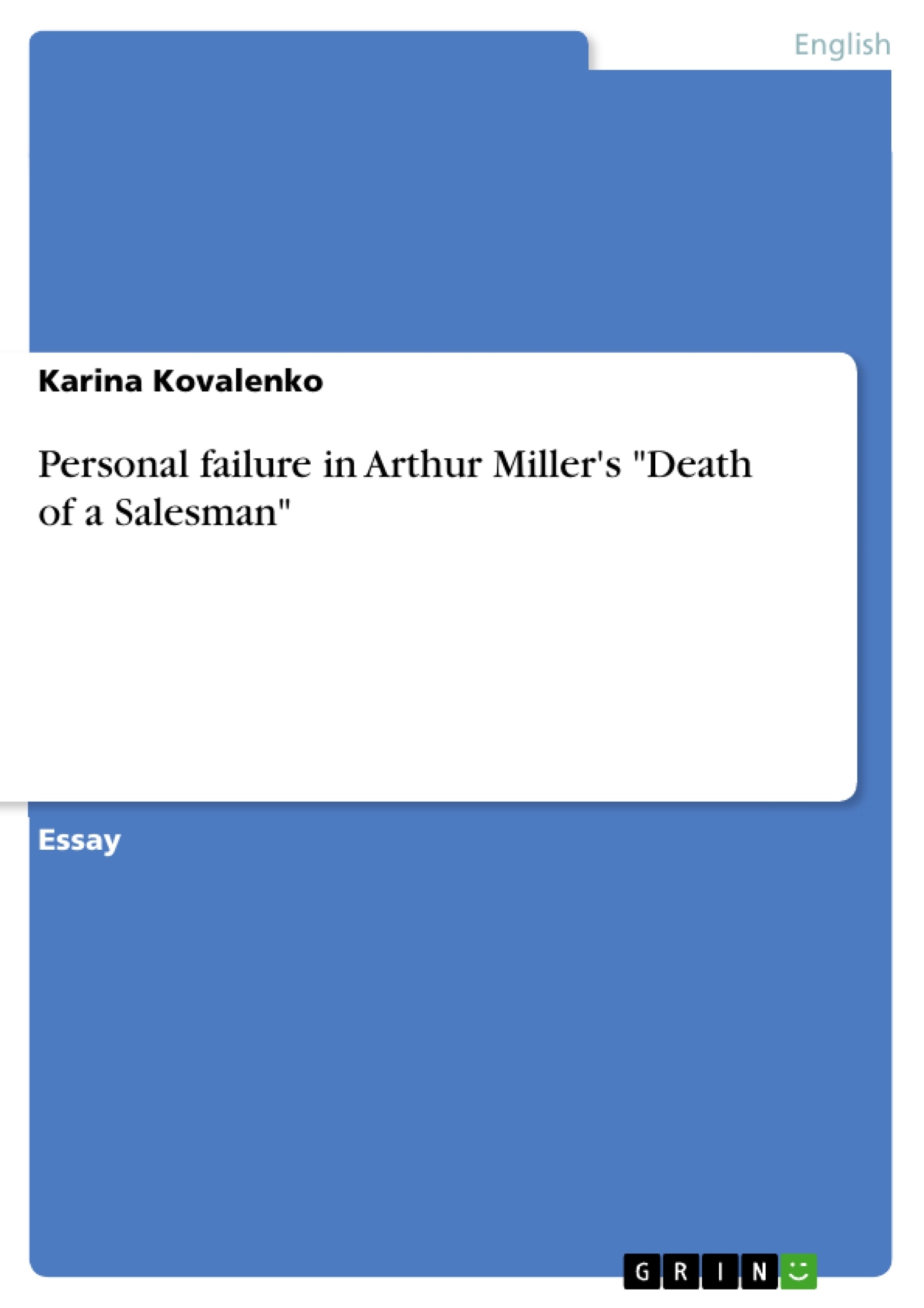Arthur Miller's play "Death of a Salesman" is a realistic drama consisting of two Acts and a Requiem. It was written in 1949. The play brightly depicts the main character Willie Loman as a person having a wide-spread unreachable “American dream” – the idea that dominates in people’s minds as a symbol of success and happiness.
Miller said: “…a lot of people give a lot of their lives to a company or even the government, and when they are no longer needed, when they are used up, they’re tossed aside…Willie Loman’s situation is even more common now than it was then [1949]. A lot of people are eliminated earlier from the productive life in this society than they used to be” (Mays, 2010, p. 1736).
Willie represents the one who tried to fulfill this dream to be a salesman and failed being “eliminated from productive life”. Even being old and having wife Linda and two adult sons Biff and Happy, Willie willfully continues going against himself. The plot combines present actions and flashbacks – as a reality and illusion, which is one of the main themes of "Death of a Salesman". Willie betrayed his real wishes and life path, and, although he is responsible for failing his self-realization in life, his environment as well as his wife's and sons’ influence contributed to the elimination of real dreams to the same extend as he himself did.
Inhaltsverzeichnis (Table of Contents)
- Responsibility for Willie's personal failure in the Death of a Salesman by Arthur Miller
- Willie's self-realization
- Willie's inner conflict
- The role of environment in Willie's failure
- Willie's external and internal conditions
Zielsetzung und Themenschwerpunkte (Objectives and Key Themes)
This essay explores the complex factors contributing to Willie Loman's downfall in Arthur Miller's "Death of a Salesman." It analyzes Willie's personal choices, internal conflicts, and the influence of his environment in shaping his pursuit of the American Dream. The essay aims to demonstrate that while Willie bears responsibility for his failure, external forces also play a significant role.
- The pursuit of the American Dream and its consequences
- The clash between individual aspirations and societal expectations
- The impact of family dynamics and relationships on personal fulfillment
- The struggle to reconcile past experiences with present realities
- The consequences of clinging to unrealistic ambitions
Zusammenfassung der Kapitel (Chapter Summaries)
The first section examines Willie's internal struggles and his inability to reconcile his true desires with his ambition to be a successful salesman. The essay highlights Willie's flawed self-perception and his persistent denial of his shortcomings. The second section delves into Willie's inner conflict, analyzing his past actions and their impact on his present state. The essay explores how Willie's desire to prove himself to his family and his obsession with outdoing his brother Ben lead him to a path of self-destruction. The final section focuses on the role of Willie's environment in shaping his American Dream and his ultimate failure. The essay argues that societal expectations, familial pressures, and the changing world around him all contributed to his downfall. The essay concludes by suggesting that both internal and external factors were interconnected and played a role in Willie's tragedy.
Schlüsselwörter (Keywords)
The essay centers on the themes of the American Dream, personal responsibility, societal pressures, family dynamics, and the consequences of clinging to unrealistic ambitions. It explores these concepts through the lens of Arthur Miller's "Death of a Salesman" and the protagonist, Willie Loman.
- Quote paper
- Karina Kovalenko (Author), 2016, Personal failure in Arthur Miller's "Death of a Salesman", Munich, GRIN Verlag, https://www.grin.com/document/333743



